Great figures
The Godfather of the Templars
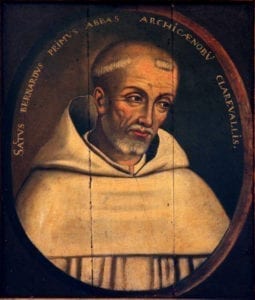 Bernard de Clairvaux, the Godfather of the Templars
Bernard de Clairvaux, the Godfather of the Templars
Born in Burgundy, Bernard entered Cîteaux Abbey in 1113. He was about 25 years old when, two years later, he founded the Abbey of Clairvaux, east of Troyes, near Bar-sur-Aube.
The most influential personality of the Council of Troyes, he wrote, at the request of Hugues de Payns, a text legitimizing the fact that a religious can carry a sword and give death: it is the De laude novae militiae, or In Praise of the New Chivalry. An important and listened to personality, Bernard intervenes in public affairs to defend the rights of the Church, and advises princes and popes. In 1145, he preached the Second Crusade at Vézelay, the daughter of Cîteaux, the Abbey of Clairvaux spread throughout the West.
She was the mother of more than 169 abbeys in 1153 after the death of Saint Bernard, who was canonised in 1174.
The main grandmasters
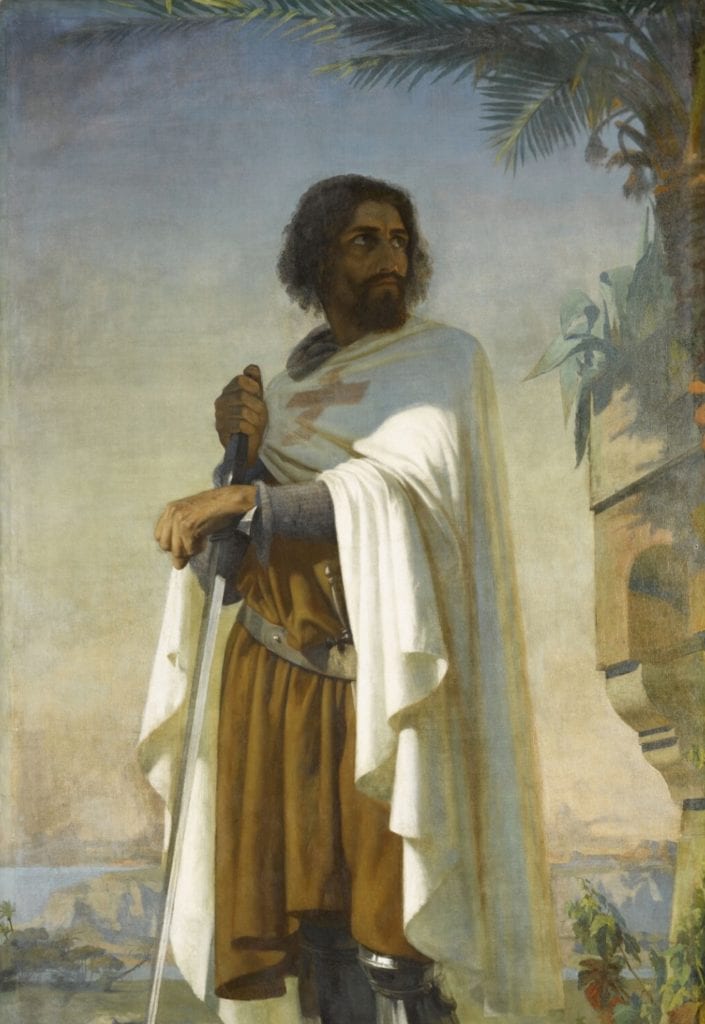
Hugues de Payns, the main grandmasters
A knight of the Champagne region, Hugues, Lord of Payns, watched over the loops of the Seine from the top of his castle, downstream from Troyes, for his lord, Count Hugues de Champagne.in 1113, he left his wife, children and lordship. In 1113, he left his wife, children and lordship and, having joined Count Hugues de Champagne I, he left for the East to defend Christian Jerusalem. In the Holy Land, Hugues de Payns put his sword at the service of the canons of the Holy Sepulchre, guardians of the Tomb of Christ. In order to protect the pilgrims travelling to Jerusalem, he formed a company of knights, the “Poor Knights of Christ”, around 1118-1120. Baldwin II, King of Jerusalem, proposed to Hugues de Payns and his companion in arms, the Flemish Godfrey of Saint-Omer, to set up their headquarters on the site of the former Temple of Solomon, hence the name “Knights of the Temple” or Templars. On his return to the West, Hugues de Payns undertook a long journey along the roads of France, England and Scotland in order to recruit new recruits and to acquire goods and lands that would be the origin of the commanderies, including that of Payns built on his own estates. It was at his request that Pope Honorius II organised a council in Troyes in 1129, in order to establish a rule for the order of the Temple. Bernard de Clairvaux, the Cistercian abbot of Clairvaux, was a rising star of Christendom and played a leading role in this. Dressed in a white cloak with a red cross sewn on the shoulder, the Knights of the Temple adopted the principles of monastic life, taking the vows of poverty, chastity and obedience. In 1130, Hugues de Payns returned to the Holy Land where he died six years later.
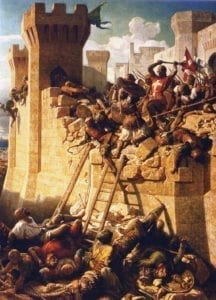 Guillaume de Beaujeu, the last great master in the Holy Land
Guillaume de Beaujeu, the last great master in the Holy Land
A member of a powerful Beaujolais family and related to Saint-Louis and Charles I of Anjou, Guillaume de Beaujeu joined the Order of the Knights Templar around 1250. We find his trace in the Holy Land in 1261, when he was taken prisoner during an expedition against the Turcomans and ransomed with other brothers. William of Beaujeu was in Sicily when he was elected Master of the Order of the Temple on May 13, 12731. He first took part in the Second Council of Lyon, where he defended his order and opposed the crusade project of James I of Aragon.
On 11th August 1274, he was in England where he recovered the considerable sums borrowed by Edward I of England and in September 1275, he arrived in Saint-Jean d’Acre, the last of the Christian settlements in the East along with Tripoli, Tyre and Beirut. In September 1275, he arrived in Saint-Jean d’Acre, the last of the Christian settlements in the East, along with Tripoli, Tyre and Beirut, and prevented Hugues III of Cyprus from acceding to the throne of Jerusalem, which had been transferred to Saint-Jean d’Acre, preparing for the arrival of Charles d’Anjou, the brother of Saint-Louis, at the head of the city. He maintained cordial relations with the Mamelukes in order to avoid a new wave of conquest. The Holy Land enjoyed a respite but Guillaume de Beaujeu’s efforts were reduced to nothing when the Sicilian Vespers came to ruin Charles d’Anjou’s businesses in the Mediterranean. Guillaume de Beaujeu, now the only true master of Acre, allowed the Lusignans of Cyprus to return to the throne of Jerusalem and called for a new crusade, in vain. A serious incident between unconscious pilgrims and Muslims from Acre reignites the war with Egypt. In 1291, the Sultan of Egypt, Khalil al-Ashraf, laid siege to the city and bombed it with catapults, mangonels and ballista.
Although he did everything possible to avoid this situation, Guillaume de Beaujeu took an active part in the defence of the freehold by leading several counter-attacks. On 15 April, Guillaume de Beaujeu attempted an outing at the head of the Templars to set fire to one of the catapults. They surprised the outposts, but their horses stumbled into ropes and the Mamelukes recovered. The Knights Templar have difficulty retreating. They tried a new operation a few days later, without success.
When the Mamelukes broke the ramparts of Saint-Jean d’Acre on 17 May 1291, Beaujeu himself went to the breach, accompanied by a few Knights Templar and the Grand Master of the Hospitallers, Jean de Villiers. Wounded by an arrow under the armpit on 18 May 1291, he had to withdraw to the rear lines. Apostrophied by a group of Pisan knights who begged him not to flee, he cried out: “Lords, I can no longer, for I am dead, see the blow”. Taken back to the commandery, he died a few hours later. He is buried in the chapel of the Temple. His successor, Thibaud Gaudin, organised the evacuation of the Temple’s treasures.
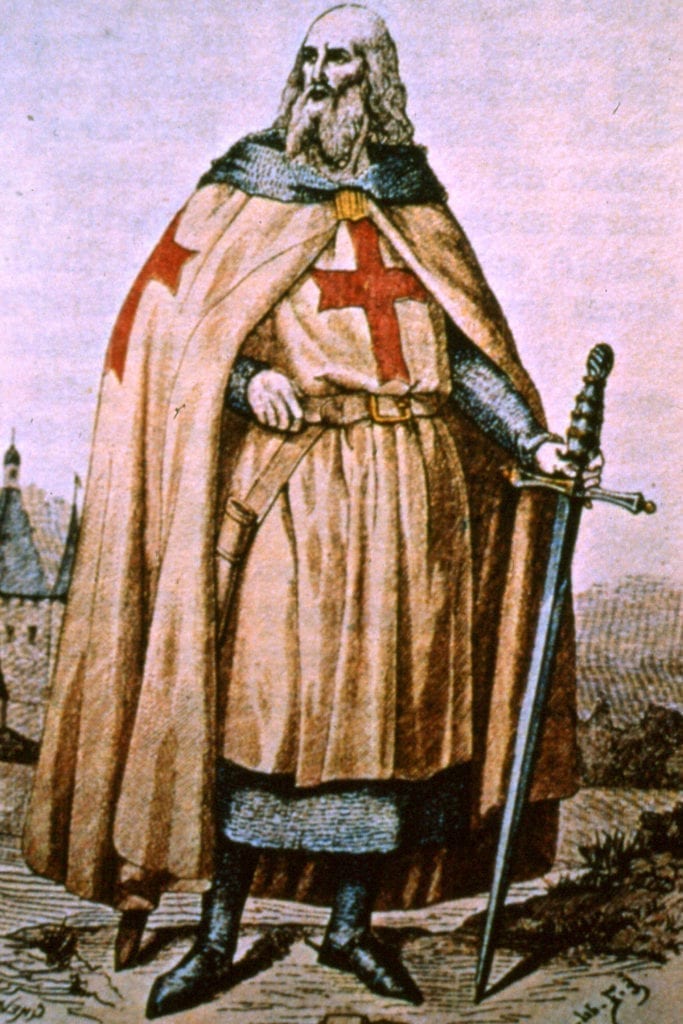
Jacques de Molay, the famous unknown
Born at the end of the 1240s in Molay, the future grandmaster came from a modest noble lineage. After entering the Order in Beaune, Jacques de Molay moved to the Holy Land very early on, at that time under pressure from the Mamelukes. There he accumulated experience and a fine knowledge of the Orient. Although he had no major responsibilities, he nevertheless criticised his predecessor, Guillaume de Beaujeu, who had chosen to appease the Saracens. After the fall of Acre, in May 1291, where Beaujeu died heroically, Jacques de Molay saw his role rise to prominence. In Cyprus, at the end of 1291, he announced his intention to reform the Order led by Thibaut Gaudin. His charisma earned him the election of Grand Master upon the death of the latter on 16 April 1292, at a time of major difficulties for the Order. Under his orders, the Knights Templar attacked Alanya and Alexandria from Cyprus. Seeking support, Jacques de Molay set sail for Europe in the winter of 1292-1293. He met Boniface VIII between 1294 and 1295, stayed in England, Aragon and Italy and worked for three years to revive the Crusade. On his return to Limassol, he enlisted in Armenia in 1298-1299, then in Syria. The alliance with the Mongols of Persia aroused great hopes, but this coalition of enemies of the Mamelukes failed in Rouad in the autumn of 1302. Jacques de Molay accepted the convocation of Clement V in the spring of 1306, thinking of setting up the Crusade. But as soon as he landed, the Temple affair broke out: rumours blamed its co-religionists for crimes against the faith. In the spring of 1307, Jacques de Molay met the Pope in Poitiers, then Philippe le Bel in Paris. He then asked Clement V to open his own investigation. Although aware of the danger, he did not anticipate the arrest of the Templars on the morning of October 13, 1307. Isolated and tortured, he admitted to having denied Christ when he entered the Order and repeated his confession before an audience of clerics.
Clement V regained control on 22 November by sending two cardinals to Paris. In front of them, Jacques de Molay retracted his confession, but the Capetian authorities drove him away to Corbeil. Transferred to Chinon, where he was interrogated by three cardinals on 20th August 1308, he told them again that he had denied Christ.
In the autumn of 1309, before the Pontifical Commission, he submitted himself to the Pope three times, and at the Council of Vienna in March 1312, Clement V suppressed the order while exonerating him of heresy. On 11 March 1314, three cardinals served Jacques de Molay with his life sentence. He stood firm and proclaimed the innocence of the Temple, together with Geoffroy de Charnay. Held for relaps, he knew that they would be burned at the stake. Pushing the strategy of memory to the point of sacrificing his life and calling for God’s judgment -without the idea of a curse-, he offers his death as an example.
The Counts of Champagne
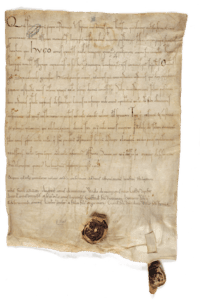
Born around 1074, Hugues was the third son of Count Thibaud I and Adèle de Valois. In 1089, his half-brother Étienne-Henri became Count of Blois and Meaux. Four years later, on 1st January 1093, Hugues inherited the counties of Troyes, Vitry and Bar-sur-Aube from his other brother Eudes IV.
In 1093, Hugues married Constance of France, daughter of King Philip I, a union which was annulled at Christmas 1105, as the couple had no children. In 1104, he was the victim of an assault. He then left for three years for a first stay in Palestine (1104-1107). Back in Champagne, Hugues remarried Elisabeth de Varais, daughter of Étienne le Hardi and niece of Mathilde, Duchess of Burgundy. Soon, however, he tried to repudiate her, to the point that the countess had to ask the bishop of Chartres, Yves, for help in making the Count understand that a husband cannot separate from his wife without her consent, even to enter religion. In August 1114, Hugues de Champagne made a new overseas journey in the company of his vassal Hugues, Lord of Payns, who settled in Jerusalem and founded around 1119-1120 the militia of the Poor Knights of Christ, the embryo of the future order of the Temple.
On his return in 1116, the Count ruled his principality for another ten years, encouraging the expansion of the brand new Abbey of Clairvaux founded by Saint Bernard in 1115, and passing on his affection to his nephew, Thibaut de Blois, whom he considered his heir, but in 1123, Elisabeth de Varais gave birth to a son, Eudes. The child was only two years old when Hugues used the pretext of an argument with his wife to have himself declared incapable of procreating by the doctors. Feeling that he was now free from the bonds of marriage, he chased away Elisabeth and Eudes, transmitted his inheritance to Thibaut de Blois and joined the Order of the Temple in the Holy Land. Having become a simple brother of the Order, Hugues died in the East after 1130.
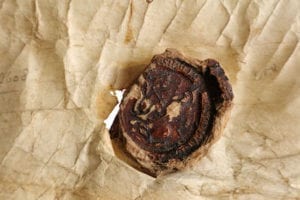
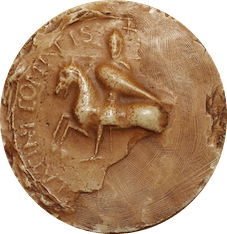
The eldest son of Etienne-Henri, Count of Blois and Meaux, and Adèle of Normandy, daughter of William the Conqueror, Thibaud was born in 1093. When he was born in 1102, his mother took over the guardianship of his counties of Blois and Chartres. Thibaud was knighted in 1107 and personally governed his estate from 1109 onwards.
In 1125, Thibaud II inherited the county of Champagne from his uncle Hugues and for the last time united all the family territories: his possessions extended from the Marne to the Loire and threatened the royal domain to the west and east. More Anglo-Norman than French, Thibaud supported Henri I Beauclerc against King Louis VI. In 1120, the shipwreck of the Blanche-Nef, in which the two sons of the King of England died, made him the closest male heir to the English crown. However, when Henri Beauclerc died in December 1135, it was his younger brother Etienne de Blois who was elected by the English barons.
In 1141, two affairs deteriorated relations between the Count and King Louis VII. The first concerned Innocent II’s choice for the archiepiscopal seat of Bourges de Pierre de La Châtre, a choice that was made to the detriment of the King of France’s candidate. The pope crowned his bishop, who was forbidden entry to his city by the Capetian. Pierre de La Châtre, at the invitation of Thibaud II, then found refuge in Champagne. To this dispute was added the problem posed by the remarriage of seneschal Raoul de Vermandois to Alix, sister of Queen Eleanor of Aquitaine. A synod of bishops pronounced the divorce of Raoul and his first wife Éléonore, niece of Thibaud II, on the grounds of kinship. The Count of Champagne appeals to the Pope who excommunicates Raoul, Alix and the bishops who pronounced the divorce while the ban is thrown on the kingdom of France. Louis VII, irritated by the attitude of his vassal, takes as a pretext the majority of Hugues’ disputed son, Eudes de Champlitte, to claim the count’s inheritance in his name. The king then invaded Champagne and laid siege to Vitry, which he burned in January 1143. Louis VII, marked by this tragic episode in which a large part of the town’s population perished, took the cross in March 1146.
Having become a friend of Saint Bernard, Thibaud II favoured the development of the Abbey of Clairvaux as well as those of Pontigny and Trois-Fontaines, while he took the initiative of founding the commandery of Barbonne, near Sézanne, on his estate in 1127. On 13th January 1129, he took part in the Council of Troyes with his seneschal André de Baudement.
Under his principality, the Champagne fairs developed, the first mentions of which date back to the 11th century.
The actors in the trial
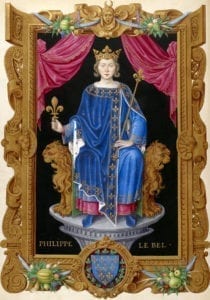 Philippe le Bel
Philippe le Bel
Philip IV, known as the Fair, offers the contrasting image of a monarch who is both powerful and disconcerting. When he was crowned on 5 October 1285, he pledged to defend peace and justice and to fight against heretics. He travelled little, developed an efficient administration, surrounded himself with forensic experts who would make a fine career thanks to him, and with advisers who would devote themselves to his cause body and soul: Pierre Flote and Enguerrand de Marigny, the most powerful, Guillaume de Nogaret, Guillaume de Plaisians a tone below but efficient and faithful… As well as Lombards, who made themselves indispensable in finding solutions to his financial problems.
In about fifteen years, he puts his vassals back in line, pushes the King of England aside, introduces new taxes and subdues the clergy. Little by little, he completed the centralization operated by his grandfather Saint-Louis. The monarchy became absolute, putting the nobles back in their place and pushing back the rights of the clergy.
However, the turn of the century heralded storms. The profound changes in society and the shortage of precious metals led to monetary tensions that the financiers of the time had difficulty understanding and reducing. Competition from Italian cities and Northern Europe undermined the pillars of the kingdom’s economy. The development of direct taxes burdened the population without resolving the financial deficit.
Philip the Fair made the Lombards pay first. Then, pursuing the anti-Jewish policy of Philip Augustus and Saint Louis, he will chase the Jews. With always the same reason: to reinforce the royal power, to affirm the king as religious chief and of course to bail out the coffers of the kingdom, at the price of iniquitous methods. The result was mixed. Certainly the Templars were annihilated, but the cruel defeat of the Golden Spurs decimated French chivalry. Aquitaine remained English and the Hundred Years’ War was in its infancy. As for monarchical centralisation, it displeased the great lords, revolted the bourgeoisie and fell on the peasants.
The conflict with the papacy took a violent turn. There was no shortage of subjects for confrontation. It was just as much a question of finance (the king collected taxes that the clergy felt should go to him) as of the superiority of the temporal over the spiritual, or of the Crusade (the king’s advisers insisted on the need to merge the orders, for greater efficiency on the ground). When the denunciations against the Templars began to emerge, Philip the Fair used the pretext to take action against the Pope and settle the question of competition between the orders. Caught in a vice in this struggle that was beyond their control, the Templars, more at ease with weapons than with legal concepts, were unable to respond effectively to the attacks.
The king relied on an accommodating French clergy. He also plays on opinion, by calling the States, a new assembly bringing together the three orders of society: the clergy, the nobility and the bourgeoisie of the cities. Here Philip the Fair seeks the support of all his subjects to legitimise his struggle against the pope. He would do the same later with the Templars.
In 1303, this led to the Anagni attack, during which the Pope was physically threatened by William of Nogaret and his Italian allies. Benedict VIII opportunely died, his successor Benedict XI, who died less than a year later, was replaced by the Bordeaux native Clement V, who was often ill but tougher than expected.
By appointing Philippe de Marigny, brother of his close adviser Enguerrand, at the head of the powerful archbishopric of Sens, which was at the helm in Paris at the time, he knew that the latter would do what it took to stop the counter-attack by the defenders of the Knights Templar: 54 Knights Templar were burned in Paris on 10 May 1314, because they had agreed to defend the order. However, the king’s obstinacy against the Knights Templar met with only mixed success outside France .
After his death, in 1315 the country experienced an annus horribilis: dreadful famine, degraded public accounts, devalued currency. Not to mention the violent settling of scores in his entourage. At the dawn of his reign, his father’s former chamberlain, Pierre de la Brosse, had been hanged by the nobles. On 13 April 1315, Philip the Fair’s own chamberlain, Enguerrand de Marigny, the last prosecutor of the Knights Templar, swung from the highest patibular forks, barely five months after the king’s death. He died with his eyes open on 29 November 1314 after what looked like a stroke, during a hunt in the Halatte forest.
 Clément V
Clément V
Born in Villandraut in Gironde, brought to the throne of Saint-Pierre after a stormy election, Clément V, whose real name was Bertrand de Got, was on his land when he heard the news. Boniface VIII’s pontificate ended in Anagni’s confusion. The next pope, Benedict XI, reigned for only eight months. The cardinals meeting in conclave in Perugia were plagued by violent conflicts between French and Italian cardinals, between pro and anti-Boniface VIII, between pro-Orsini and pro-Colonna… They decided to ease tensions by electing a candidate from outside the Sacred College, accepted by the King of France and approved by Francesco Caetani, nephew of Boniface VIII. They were given the name Bertrand de Got, Archbishop of Bordeaux, therefore neither Italian nor cardinal… nor even present.
Wishing to receive his insignia in Vienna, he finally accepted the king’s pressing suggestion to hold the ceremony in Lyon. In March 1309, in the freezing cold, while he was caracoling on his beautiful white palefroi, the fall of a wall during the procession resulted in 12 deaths, including that of the Duke of Brittany. The pope fell off his horse and lost a 6,000 guilder diamond in his fall, which his guards had all the trouble in the world to find.
To avoid a conflict with the King of France, he settled in March 1309 in Avignon, the city of one of his vassals, the Count of Provence, cousin of Philip the Fair’s father. On the other side of the Saint-Bénezet bridge, Philippe le Bel’s tower in Villeneuve-lès-Avignon reminds him of the oppressive presence of the sovereign.

Warned by Philip the Fair of the suspicions against the Knights Templar, Clement V will remain on his position of principle: the Knights Templar obey only the Pope, the only one able to judge them. In the bull Pastoralis præminentiæ, fulminating in November 1307, he ordered the arrest of all the Knights Templar in Christendom and the sequestration of their property, with the exception of the Knights Templar in the Iberian Peninsula. In August 1308, while playing the watch against a vindictive king, he created diocesan commissions to investigate the Templars’ actions and pontifical commissions to judge the order of the Temple as such. The latter were to deliver their reports to the Council convened in Vienna in 1310, which would decide their fate.
He summoned the Templars to Poitiers to be questioned by his envoys. The king sent him some small fry and held the leaders in Chinon, under the pretext of fatigue… Many years later, it was learned that they had been absolved by the Pope’s envoys in August 1308. Realizing that Philip the Fair was the strongest, the pope was somehow forced to abandon the Templars to their fate.
The council finally met on October 16, 1311, in Vienna. The pontifical commissions, unconvinced by the outcome of the investigations, proposed that the order be reformed, not abolished. The King of France kept up the pressure by presenting himself on 20 March 1312 at the head of an impressive army. The clerics became frightened and proposed to abolish the order. The pope had to take a stand in a very tense context.
On 3 April 1312, flanked by the King of France and his son, the King of Navarre, he solemnly took the floor: “Considering the grave scandal that these things [revealed] have caused against the order, which did not seem to be able to calm down as long as the order existed”, he decided to suppress it “not without bitterness and sadness in his heart”. But he adds: “We reserve the persons and goods of this order for the ordinance and disposition of our apostolic see. “The King of France, who had seized the matter to set himself up as the supreme guardian of the faith, in place of a pusillanimous papacy, notes that he has achieved his ends. But Clement V reserved the devolution of the Templars’ property and entrusted it to the Hospitallers.
The dignitaries of the order had to wait until 22nd December 1313 for the sick Clement V to charge three cardinals (Nicolas de Fréauville, Arnaud d’Aux and Arnaud Nouvel) with settling their fate. These cardinals, in a hurry to get it over with, decided to bring Jacques de Molay, Geoffroy de Charnay, Hugues de Pairaud and Geoffroy de Gonneville before a council made up of themselves, the archbishop of Sens (Philippe de Marigny, brother d’Enguerrand…) and various prelates and doctors of theology and canon law.
On 18 March 1314, in the square in front of Notre-Dame, considering that the Knights Templar had “publicly and openly confessed their crimes” and persisted in their confessions, awaiting the clemency of Clement V, their sentence fell like a knife: according to the chronicler who continued William of Nangis, “On the Monday after the feast of Saint Gregory, the said assembly condemned them to severe and perpetual imprisonment. “We know what happened next: Jacques de Molay and Geoffroy de Charnay rebelled against this decision and were burned the same day as relapses, by order of the King of France.
Suffering from intestinal cancer, Clement V tried to soothe his pain by swallowing crushed emeralds, on the advice of his doctors. This remedy being worse than the disease, he died on April 20, 1314, in Roquemaure, one month after the burning of the Templars. His remains were brought back to Carpentras for a solemn tribute. The conclave met there on 1 May 1314 to elect his successor and lasted two months because the French and Italians argued without reaching an agreement. On 24 July 1314, dissatisfied with their uncle’s legacy, the nephews of Clement V, Bertrand de Got and Raymond Guilhem de Budos, plundered Carpentras and took away Clement V’s treasure, 1 million florins intended for the crusade.
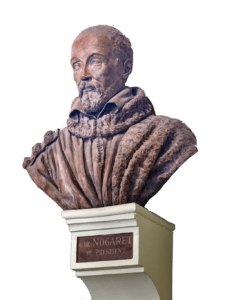 Guillaume de Nogaret
Guillaume de Nogaret
Born in Saint-Félix-de-Caraman, today Saint-Félix-Lauragais, in a probably Cathar family, Guillaume de Nogaret embodies marvellously these legists whose career was to be accelerated under the reign of Philippe le Bel, who deliberately relied on them. Doctor of law and teacher of civil law in Montpellier, his talents as a legal adviser enabled him to build up a fine clientele, ranging from the city’s bourgeoisie to the King of Majorca, via the Bishop of Maguelonne. He was noticed by the king, who needed clever forensic experts, as the law was in full expansion. He entered the King’s Council and sat in Parliament in 1294. He was rewarded by his ennoblement in 1299.
Alongside Enguerrand de Marigny, who reigned over the finances and sought to bring the great feudal lords into line, Nogaret was in charge of the Church and the papacy. It is a question of substituting the Capetian king for the Pope in the position of defender of the law, following the formula of William of Plaisians “The King of France is emperor in his kingdom”. To begin with, he gets his hands on the Lombards. Then, William of Nogaret enforced the orders to expel Jews from France, using the same methods of sinister memory that he would use for the Templars.
Having become one of Philip the Fair’s trusted men, he was responsible for the brutal turn taken by the interview with Pope Boniface VIII, during the famous “Agnani attack” in 1303. This earned him an excommunication from which he was finally absolved in April 1311, in exchange for penances – nine pilgrimages – which he could easily dispense with. Having become Keeper of the Seal, it was he who orchestrated the trial against the Templars. He therefore had full powers to conduct a case which, as the historian Ernest Renan ironically noted, “required little scruples, imperturbable impudence and a long practice of the subtleties of chicane”.
He prepared the prosecution case, supervised the arrests and personally took Jacques de Molay to the Temple Tower in Paris. It was he who drew up the written outlines of the interrogations that the inquisitors only had to follow, with torture to back them up. He even added his intimidating presence to some of the interrogations of the inquisitor William of Paris. To counter the reaction of Pope Clement V, faced with the fait accompli of a trial that he should have conducted himself, he put pressure on him by mixing up the faults attributed to the Templars and the posthumous accusations of heresy brought against Boniface VIII, whose corpse he threatened to have burnt.
After the Council of Vienna and the dissolution of the Order of the Temple by a Clement V anxious to preserve the pontifical institution, his influence on royal power waned in favour of Enguerrand de Marigny. He died on 11 April 1313, one year before the alleged curse was put on him at the stake by Jacques de Molay.
According to Ernest Renan, “Nogaret deserves above all to be counted among the founders of French unity, among those who took the royalty clearly off the path of the Middle Ages to engage it in an order of ideas borrowed partly from Roman law and partly from the genius of our nation. Never again has there been a complete break with the past; never again has there been innovation with more audacity and originality… But it is unfortunate that this triumph of reason of State occurred with such an overflowing of arbitrariness. »





